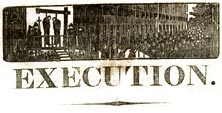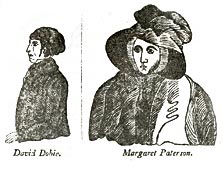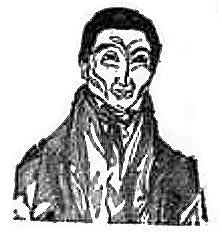
Highlights
Crime
Descriptions of the trials and executions of murderers could go into a number of editions, such was the demand by the public. The occasion of such executions provided a great opportunity for printers and hawkers to sell their wares.
 |
||||||||||||||
| home | background | illustrations | distribution | highlights | search & browse | resources | contact us | ||||||||||||||
HighlightsCrime | ||||||||||||||
| Accounts of murders and descriptions of executions were the biggest and most popular of the subjects covered by broadsides. Murders could easily generate a number of sheets, beginning with the discovery of the body, going on to the trial, the execution of the guilty party and verbatim transcriptions of their last words (Browse 'last words' broadsides). Many, if not all, of the scaffold speeches and confessions reported were purely imaginary. More often than not the criminal would give a brief life history, describing how he or she fell into a life of crime. Finally there would be an appeal for forgiveness and the readers would themselves be urged to live upright lives.
Descriptions of the trials and executions of murderers could go into a number of editions, such was the demand by the public. The occasion of such executions provided a great opportunity for printers and hawkers to sell their wares. | ||||||||||||||
|
|
||||||||||||||
 View this broadside |
|
Last notesJames MacPherson (1675-1700) was a 'Robin Hood' type of character in the north-east. He robbed from the rich, gave to the poor and indulged in cattle-rustling. He was captured in Keith and executed in Banff.Legend has it that he read out his farewell poem on the scaffold, then played one of his own tunes on the fiddle. After finishing the tune, he offered the fiddle to the crowd. As no one came forward to claim it, however, he smashed the fiddle, then was executed. This fiddle is on display in the Clan MacPherson museum in Newtonmore, Inverness-shire. The song 'MacPherson's Farewell' (also called 'MacPherson's Rant') by Robert Burns, is based on this incident. |
|||
 View this broadside |
Assault and robberyWilliam Thomson was executed in Dalkeith in 1827 for the crime of assaulting and robbing a farmer of a silver hunting watch and other articles.According to the broadside as soon as he was sentenced, he expressed remorse and on the scaffold urged the assembled multitude to take warning from his disgraceful and shameful end. More than likely these so-called last words were complete fabrications. |
||||
 View this broadside |
A Gilmerton murderThe rape and murder of Margaret Paterson by John Thomson and David Dobie in 1830 generated a huge number of broadsides.The crimes carried out by the Gilmerton carters were particularly brutal and the broadside writers spared their readers few details. Our illustration shows portraits of the principals involved - which were included as a bonus for the public - taken from a broadside that contained stock 'last words'; by the criminals and a standard execution scene. |
||||
 View this broadside |
Burke and HareThis hugely detailed broadside concerning the notorious murderers William Burke and William Hare is more typical in its layout of a newspaper than a broadside. However it does contain the block capitals and illustrations associated with the broadside publication.Burke and Hare were two Irishmen who came to Edinburgh to work on construction of the Union Canal. They became aware of the demand for corpses by anatomists and turned to murder to supply this demand. In all they were guilty of 16 killings. Burke was executed in January 1829 in Edinburgh before a baying crowd of 35,000. Hare turned king's evidence and died in obscurity in England. |
||||
|
NLS home page | Digital gallery | Credits National Library of Scotland © 2004 |